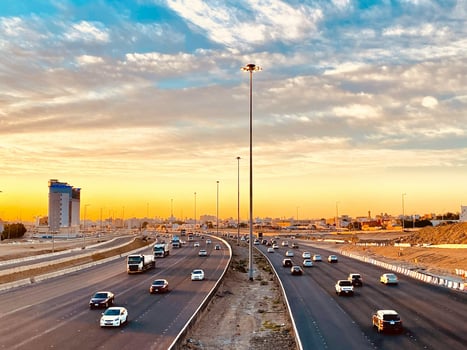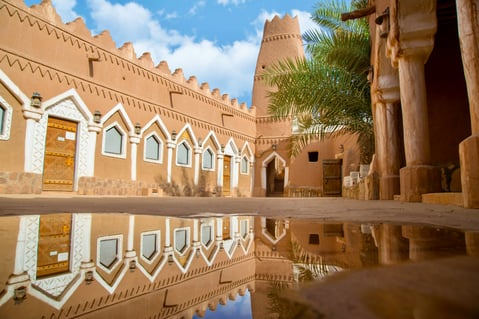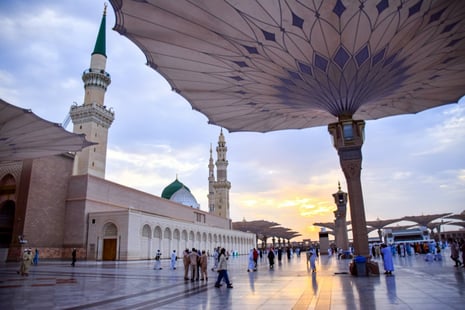The Best Careers in Aerospace
A career in the aerospace industry is a coveted aspiration for many young engineers. This field is not only highly lucra...
Read full blog
Saudi Arabia is aiming to attract $100bn in investments into its aviation sector by 2030. This is part of the kingdom’s push to diversify away from a purely oil-based economy, via the Vision Project 2030. The project is vast, huge in scope, made up of several ‘giga-projects’ designed to transform Saudi Arabia’s economy and infrastructure.
Tourism is set to be one of the main drivers of its economy in the future, and to do that, it needs to grow. To support this, Saudi Arabia’s aviation strategy aims to reach 330 million passengers, 250 international destinations, and 100 million tourists annually by 2030.
According to the World Travel & Tourism Council, travel and tourism accounted for 6.5% of the Saudi Arabian economy in 2021. The Vision plan aims for tourism to make up 10% of the economy by 2030, and generate around one million new jobs.
Some of the key initiatives of the Kingdom’s National Aviation Strategy include opening a new airport in Riyadh, opening eight new regional airports, and launching a new airline to manage the increased demand.
Low-cost air carrier Flynas is expanding its global presence by opening new units in two countries. This is in service of its aim of becoming the largest budget airline in the Middle East, and becoming more well-known across the world.
Flynas reported a 91% growth in passengers over 2022. This was in part due to Flynas launching 30 new routes, and 16 new destinations, as well as bringing the total fleet number up to 43, allowing for far more flights to take place.
They aim to continue this growth across this year and beyond: the Riyadh-based airline is looking to expand its existing fleet to 250 planes, ensuring it will play a key role in the growth of the aviation section throughout the kingdom, as well as the region as a whole.
While the plan aims to create new commercial airports, existing airports are going to be refurbished and upgraded to improve efficiency and customer experience.
The goal is to upgrade these airports to be better at handling more passengers, which will of course be arriving in greater numbers than ever before, but also to create transportation and logistics hubs that will compete on a global scale, that travellers choose to connect at.
Dubai is likely an inspiration here, having proved that it is possible to take an airport and transform it, changing the way people travel.

Until now, most tourists and visitors have been domestic. For the tourism sector to be transformed, bringing in international visitors, there will need to be new tourism attractions. This is where the giga-projects come in.
The “Red Sea eco-system” is a key area of investment and development, and consists of three giga-projects: AMAALA, NEOM, and the Red Sea Project.
The area is close to both Jordan and Egypt, each with their own resorts along the Red Sea, showing that the region is already a viable tourist zone, which has led to each project being aimed at specific groups of tourists to maximise revenue potential.
AMAALA is an ultra-luxury tourism destination currently being developed, spanning more than 4,000 square kilometers.
When complete in 2027, it will be home to more than 3,000 hotel rooms across 25 hotels, and approximately 900 luxury residential villas, apartments, and estate homes, alongside high-end retail establishments, fine dining, wellness, and recreational facilities.
A former military airport, NEOM Bay has been redesigned for commercial travel, and started handling passengers earlier this year. NEOM sits between three continents, with around 40% of the world accessible within a six-hour flight. Customer-centric connectivity is the aim for the airport, with cutting-edge technology providing an unparalleled experience.
The Red Sea International Airport is due to open next year and is designed to be able to handle up to a million passengers at its busiest times. The airport is planning to innovate on the traditional travel model, perhaps the most exciting way being the removal of the baggage claims area, with luggage instead being delivered to guests’ hotel rooms to shorten time spent at the airport.

There’ll also be a new flag carrier, possibly branded as RIA (Riyadh International Airlines), based at Riyadh, designed to compete with other leading Middle Eastern airlines.
That means an extensive long-haul network, enabling international transit traffic, and bringing high value tourists into the kingdom from all over the world. With initial investment said to be in the region of $30 billion, and rumours of a large order of Airbus A350 aircraft, the airline may be set to make a big impact on the aviation industry.
Saudi Arabia has always been able to attract investment, and with these plans in place, there is no doubt that the kingdom will change the future of the aviation industry, both in the region, and around the world.

Learn why civil engineering is growing in the Middle East, or learn about the technical skills shortage in the Middle East
A career in the aerospace industry is a coveted aspiration for many young engineers. This field is not only highly lucra...
Read full blogWhat is Air Force One? Air Force One is the modified plane flown in by the President of the United States of America. It...
Read full blogWhen most people think of the aviation industry, they most likely think of planes. Millions of flights take off and land...
Read full blog
Nicosia, Cyprus
© VHR 2020 | All Rights Reserved